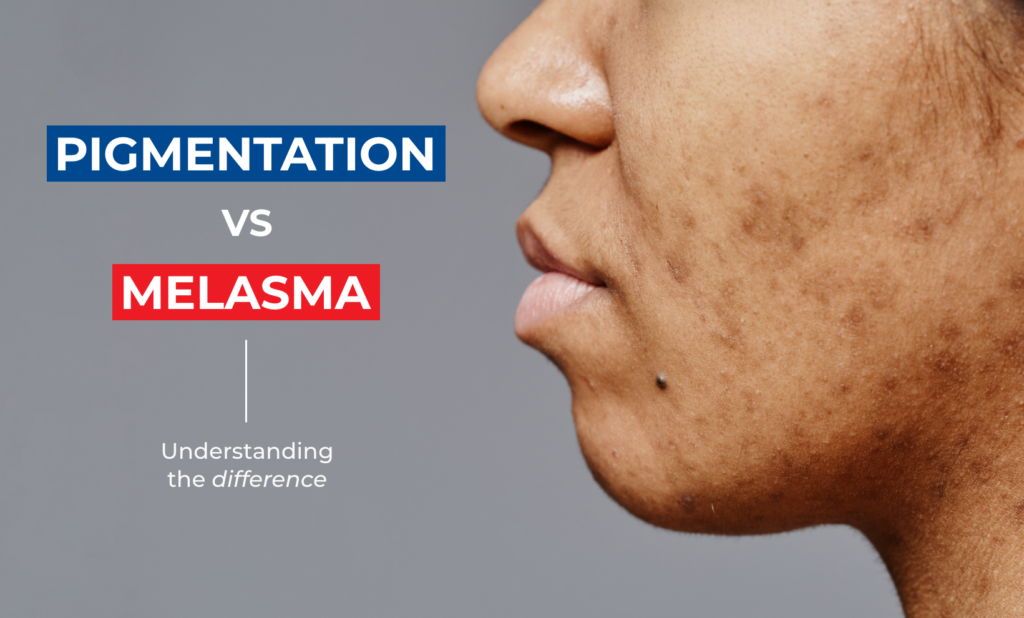
Discover how advanced
Photodynamic Therapy (PDT)
can treat melasma and restore your skin’s natural clarity.
Many Australians struggle with uneven skin tone, dark patches, or blotchy pigmentation — particularly on the face. These changes can affect confidence, but they’re also treatable when properly diagnosed. One of the most common causes of facial pigmentation is melasma, a condition often mistaken for general sun damage or age spots.
At Skin Check Australia, we use advanced technology, including MediSun PDT 1200 red-light Photodynamic Therapy, to help improve melasma and other pigment-related conditions safely and effectively.
What Is Melasma?
Melasma is a form of hyperpigmentation that causes brown or grey-brown patches on the skin — most often on the cheeks, forehead, upper lip, and nose. It’s more common in women and often triggered by:
- Hormonal changes (pregnancy, contraception, hormone therapy)
- Sun exposure (UV rays stimulate melanin production)
- Genetics and skin type
- Heat and inflammation
Melasma can be persistent and tends to darken with sunlight, stress, or fluctuating hormones.
Melasma vs. General Pigmentation — What’s the Difference?

While both melasma and pigmentation involve increased melanin (the pigment that gives skin its colour), they differ in cause, depth, and behaviour:
| Feature | Melasma | General Pigmentation (Sunspots, Freckles, Age Spots) |
| Cause | Hormonal triggers + UV exposure | Mainly UV exposure and ageing |
| Appearance | Symmetrical brown/grey patches on face | Isolated brown spots or uneven tone |
| Depth | Often deeper (epidermal & dermal) | Usually superficial |
| Response to Treatment | More resistant and recurrent | Typically easier to fade |
| Worsens with Heat & Hormones | Yes | Usually not hormone-related |
Because of these differences, accurate diagnosis by a qualified clinician is essential before beginning treatment.
How Photodynamic Therapy (PDT) Helps Treat Melasma
At Skin Check Australia, we offer non-invasive PDT treatments using the MediSun PDT 1200, one of the most advanced phototherapy systems available in Australia.
While PDT is best known for medical skin treatments, such as actinic keratosis, it also shows promising benefits in reducing melasma and improving skin clarity.
How It Works
Photodynamic Therapy uses specific wavelengths of red and blue light to gently activate your skin’s natural healing and regenerative mechanisms. When applied to pigment-prone areas, this light energy helps:
- Regulate overactive melanocytes (cells that produce pigment)
- Reduce inflammation that contributes to pigmentation flare-ups
- Promote cellular turnover for clearer, smoother skin
- Boost collagen for improved texture and luminosity
The result? A more even skin tone, reduced dark patches, and healthier-looking skin overall.
Benefits of PDT for Pigmentation and Melasma
- ✨ Non-invasive and pain-free — no needles or harsh peeling agents
- ⏱️ 30–45 minute sessions with no downtime
- 💧 Improves overall tone and texture while targeting pigmentation
- 💎 Suitable for various skin types, including sensitive skin
- ⚡ Stimulates natural repair and helps prevent future pigmentation flares
When performed in a clinical setting, PDT can also complement other treatments such as topical lightening creams, chemical peels, or laser therapy, depending on your individual skin needs.
Why Choose Skin Check Australia
At Skin Check Australia, your skin health and safety come first. Every patient receives a thorough assessment by trained clinicians before any treatment begins.
Our team will:
- Diagnose your pigmentation type using professional dermoscopic and visual analysis.
- Tailor a treatment plan that may include PDT, medical-grade skincare, or other evidence-based options.
- Monitor your progress with imaging and follow-ups to achieve lasting results.
With clinics across Queensland and Australia, our goal is to help you achieve clearer, healthier skin — safely and confidently.

